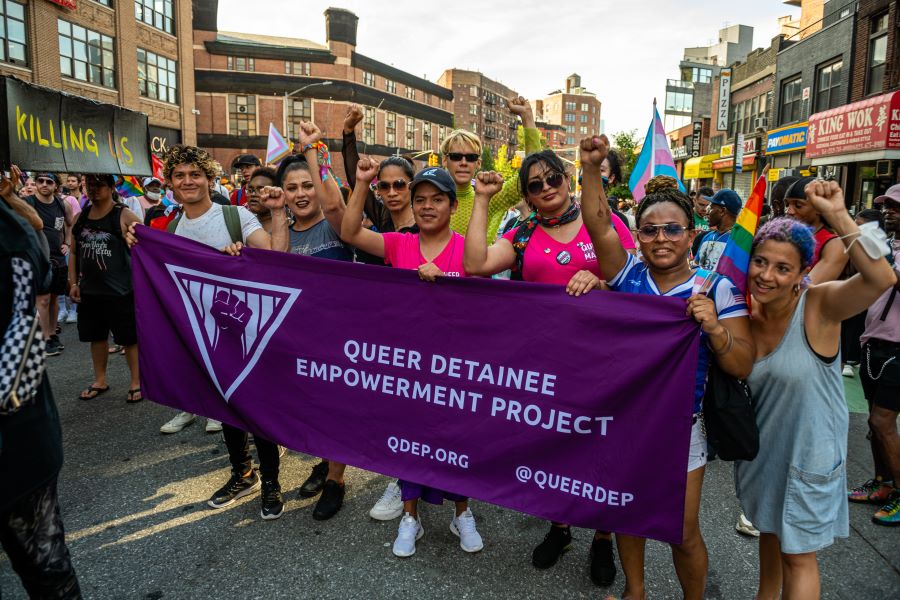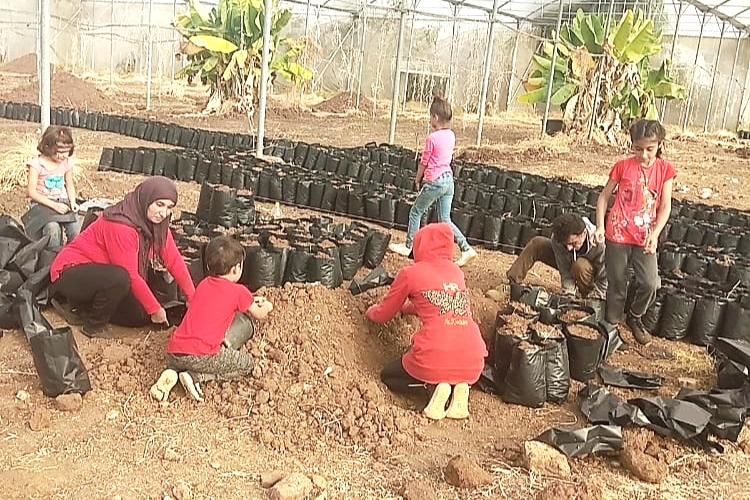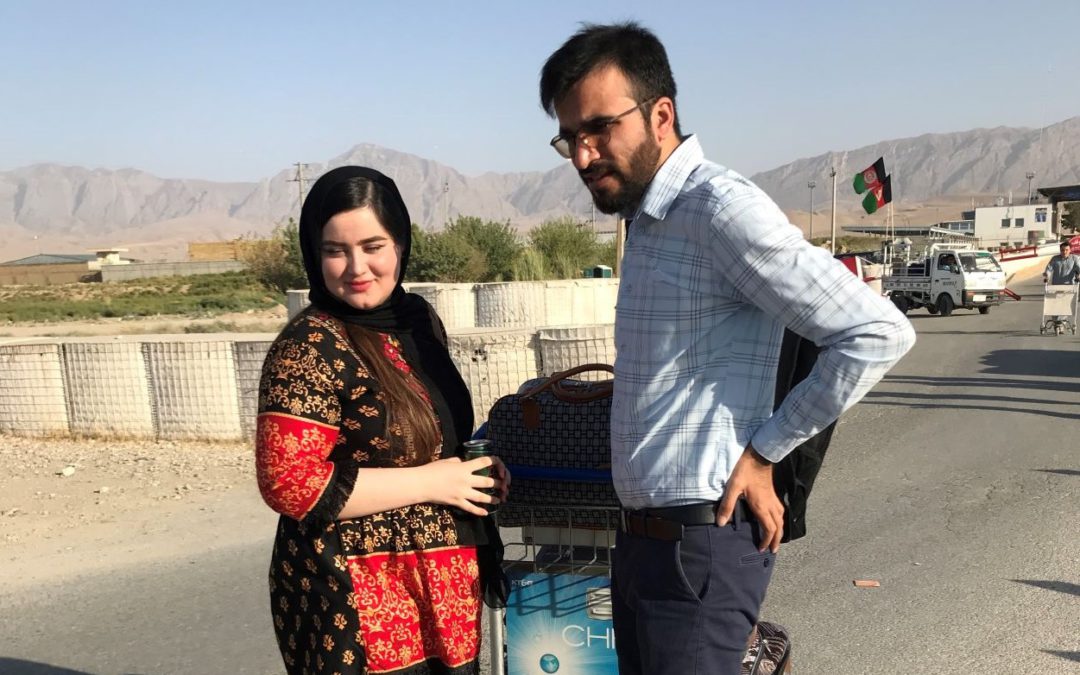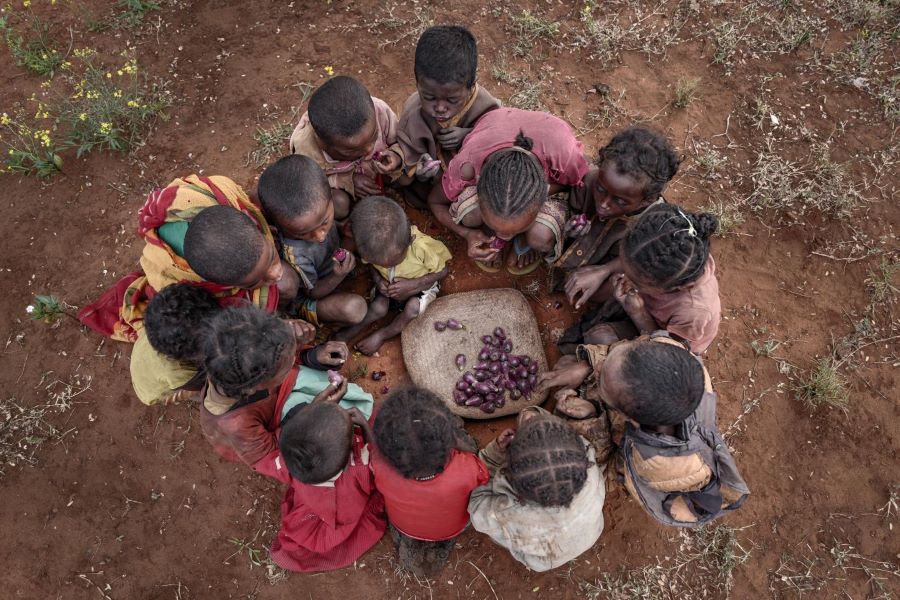
by Hanna Rahman | 18 Feb 2022 | Educators' Catalog, Hewitt, Human Rights, Student Posts, Women's rights, Youth Voices
Transgender and queer immigrants can face hardship in detention and when settling in the U.S. Here’s a group that helps LGBTQIA+ migrants. Protesters at a rally jointly organized by the Queer Detainee Empowerment Project in New York on 4 July 2021. (Photo...
Relocating and integrating to a new country is difficult on its own, but individuals who identify as lesbian, gay, bisexual, transgender, queer, intersex or asexual are even more vulnerable, particularly in immigrant detention centers. Hanna Rahman, a student at The Hewitt School in New York City, reports on one organization’s work to aid, empower and advocate for LGBTQIA+ detainees and undocumented individuals.
The Queer Detainee Empowerment Project (QDEP) provides health, educational, legal and emotional assistance to the LGBTQIA+ migrant community, making sure to involve the community in planning and activities. QDEP’s grassroots model and inclusive strategy inspired Rahman to consider her own perception of how community service is organized.
Exercise: Ask students to compare large aid organizations such as UNICEF or the UN High Commission for Refugees with smaller grassroots organizations like QDEP. How are they similar and how are they different? What do they think is a more effective and equitable approach to humanitarian assistance?

by Katharine Lake Berz | 1 Feb 2022 | Conflict, Educators' Catalog, Human Rights, Immigration, Middle East, Refugees, University of Toronto Journalism Fellows
Lebanon is suffering one of the worst crises the world has seen in 150 years. The children in one Syrian refugee family have little choice but to work. The Hemo family working in a greenhouse where they earn $10 a day for their labour, November 2021 (All photos by...
More than half a million refugees have fled Ukraine since war broke out one week ago, with more still fleeing the fighting. Throughout history, displacement has gone hand-in-hand with conflict. Decades of violence in Afghanistan displaced more than 2.6 million refugees, with thousands more fleeing last autumn after the U.S. troop withdrawal. (Some, like correspondent Zamir Saar, sought refuge in Ukraine.) According to the UNHCR, since 2011, the crisis in Syria has forced 6.8 million people to leave their country, with another 6.7 million internally displaced.
Now, an estimated 1.5 million Syrian refugees are living in Lebanon, including Sanam Hemo, her husband, and their seven children. While Lebanon provides safety, the country is experiencing a dire economic crisis, leaving no choice but for all family members — even their four-year-old — to work. Katherine Lake Berz, a journalism fellow at the University of Toronto, gives an up-close account of the reality of refugee life for Sanam’s family and how organizations like UNICEF Canada are seeking solutions to child labor.
Exercise: Ask students to put themselves in Sanam and Othman’s shoes. What would they do differently? What would they do the same?

by Zamir Saar | 16 Nov 2021 | Asia, Conflict, Educators' Catalog, Eyewitness, Human Rights, Identity, Immigration, Islam, Personal Reflections, Refugees, University of Toronto Journalism Fellows
My pregnant wife and I were lucky to escape Afghanistan after it fell to the Taliban. We have swapped danger for refuge and bewilderment in Ukraine. The author and his wife bid farewell to their families at the entrance to Mazar-e-Sharif airport in Balkh province,...
Journalist Zamir Saar delivers a first-hand account of his and his wife Kamila’s experience escaping Afghanistan after the country fell to the Taliban in August. Grateful for refuge in Kyiv, Ukraine, far from the violence and downward economic spiral that face their native land, Zamir and Kamila — five months pregnant at the time they fled — now find themselves unsettled by makeshift living arrangements and uncertainty about their future. As Zamir notes, the hardest part has been leaving the familiar spaces in their home towns and finding nothing so far to replace them in their new environment. But there’s also recognition that there’s only so much a receiving country like Ukraine can do.
Exercise: Ask students to think about what makes them feel most at home and how they might recreate those things in an unfamiliar environment.

by Helen Womack | 11 Nov 2021 | Europe, Human Rights, Immigration, Politics
Thousands of refugees are in limbo in a forest straddling Poland and Belarus, caught in a humanitarian vice that is raising tensions in Europe. A wooden cross in Białowieża forest in eastern Poland in 2016 (Photo by Helen Womack) In the ancient Białowieża forest in...

by Jeremy Solomons | 29 Oct 2021 | Africa, Climate change, Environment, Immigration, Refugees
Africa has contributed very little to global warming. But the continent is the most vulnerable to the impact of climate change — and already suffering. Children in Madagascar. The United Nations estimates that at least half a million children under the age of...





